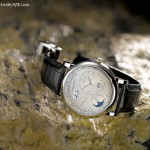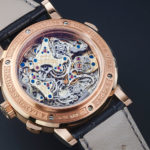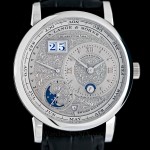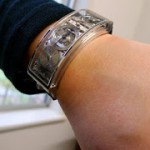Interview: Lange CEO Wilhelm Schmid Talks Retail and CPO
Going all-in with retail, and staying away from secondary.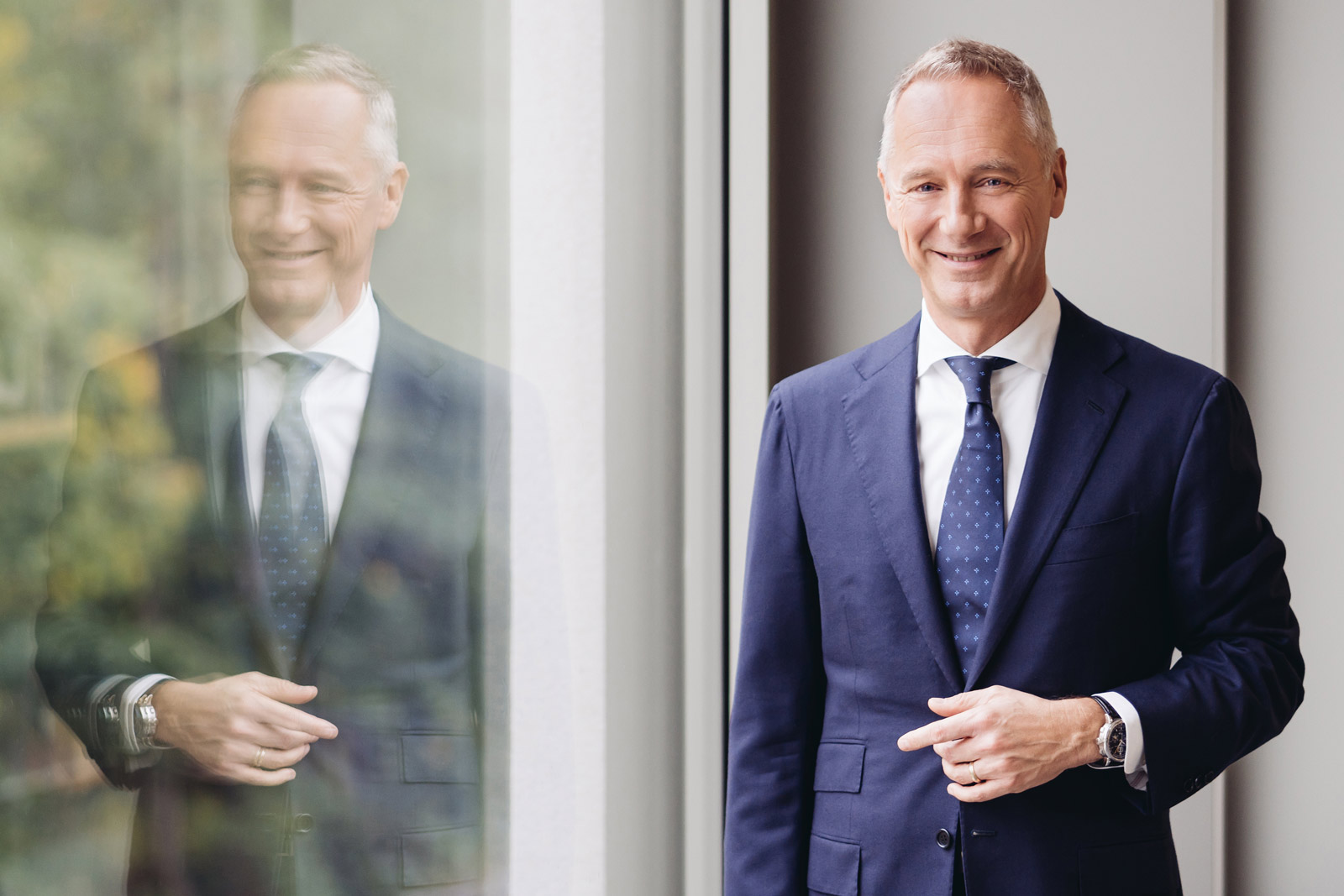
Very few will have missed the news of Rolex buying Bucherer, and all of the reactions to it. Given the big change this poses to the world of watch retail, when we were recently given the chance to speak with Wilhelm Schmid, chief executive of A. Lange & Söhne, we thought it the perfect opportunity to get his insight on the current retail landscape.
We sat down with the seasoned leader – now the longest-serving brand boss in Richemont – at this year’s Concours of Elegance, the classic car show at Hampton Court Palace, surrounded by the sounds of vintage V8s revving in the distance. Now that the world has exited the pandemic for good, the way we shop seems to be going back to normal and the shifts that brands made during those turbulent years are either being undone or slowly wound down in the hope that customers are willing to go back to the old ways of doing things and getting out to physical stores. Mr Schmid is certainly of the mindset that a face-to-face connection is the only way to sell one of their watches, as we discovered in our discussion below.
Not only did we talk about how the German brand plans to change their retail strategy moving forward, we also queried him on the Bucherer takeover and how Lange is adapting the to rising tide of brands developing certified pre-owned (CPO) offerings.
The following interview has been edited for clarity and length.
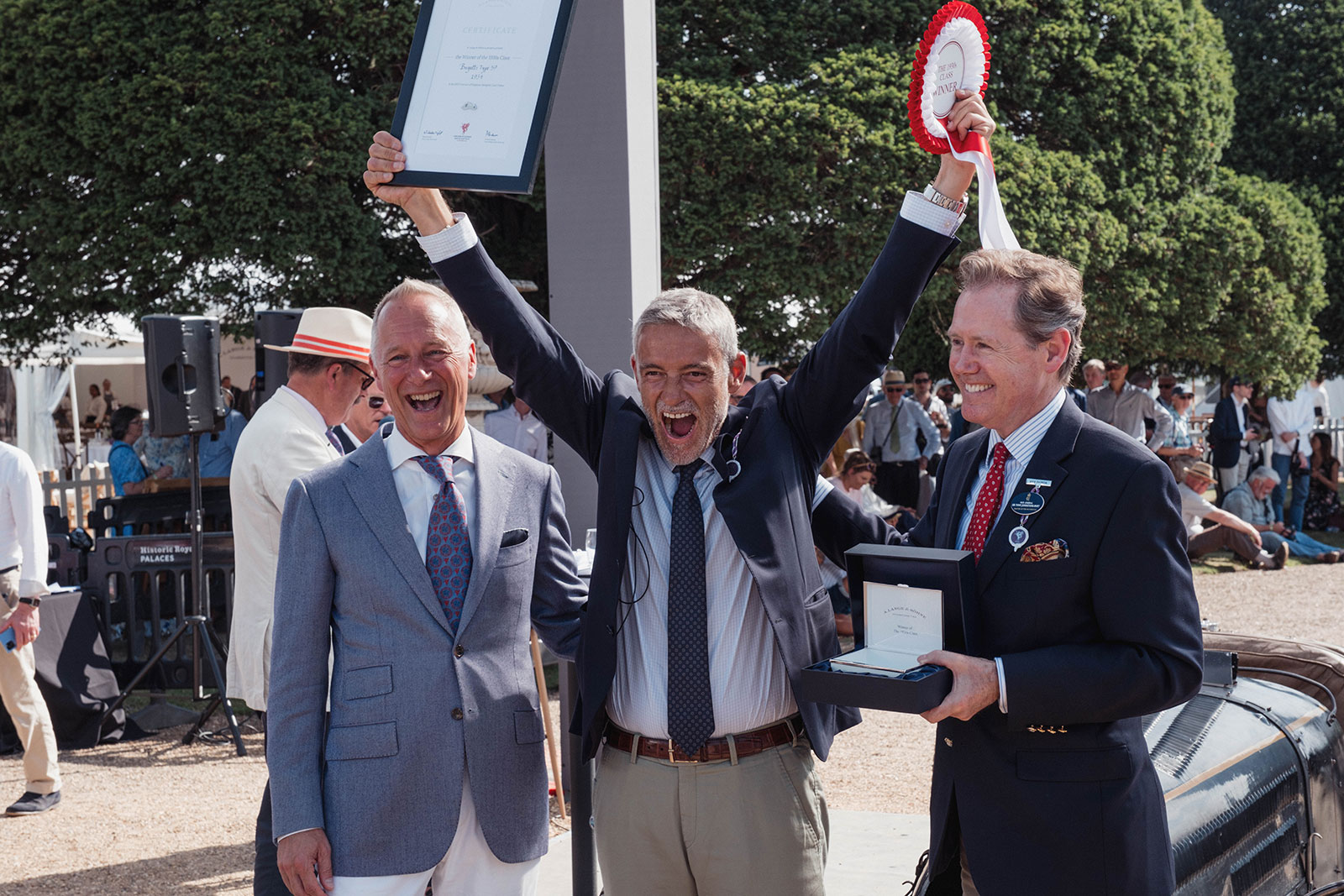
Wilhelm Schmid (left) with the best-in-show winner at the Concours of Elegance 2023
RPS: Perhaps we could start off by you briefly outlining the current retail strategy for A. Lange & Söhne.
Wilhelm Schmid (WS): I’m a strong believer of knowing your customer. And if you know what they want, what they like, what they don’t like, and you have easy access to them then you have the foundation for a successful future. I’m not saying it always has to be a direct relationship, but fundamentally it is important for a brand that only produces a few thousand watches a year to know where these watches end up, who is buying them and what they want.
So about five years ago we made the decision to invest heavily in analytics in order to get a clearer picture of our client base. We paired this with investing into training our staff, to ensure that no matter where in the world it happens, that first interaction happens properly and in an A. Lange & Söhne way. After five years I can say we are nearly there.
I am aware, of course, of people that say they have been a good customer and now we ignore them and I always apologise for this because we don’t know them and so we try to start that relationship and build the trust up. If there were a different way to approach this I’d be happy to listen, because the most important thing for us is that we know where our watches end up.
RPS: You have a relatively high number of points of sale around the world, currently 80, for the small number of watches you produce. In your eyes, what is the main function of these points of sale? Are they marketing tools, are they centres to manage client lists, or are they purely there to sell watches in your eyes?
First of all, the 80 you see today won’t be the 80 you see at the end of the year. We will go down for sure. But I think part of the answer is in your question, we produce very few watches a year and to maintain a certain availability of watches at our points of sale, so people don’t go there and only see watches for exhibition only – which is a concept I don’t believe in by the way – we have to find the balance between the watches we have available and those you have to wait for. I think that is doable with maybe 50 points of sale, but any more than that paired with the current demand that we face and the production numbers that we can’t increase would not be good for our customer-base.
RPS: So is further verticalisation going to be a part of that? Bringing more, if not all of your points of sale in house.
WS: We have most of them in house at the moment, the big ones are all ours. And yes, if there is a middleman in between, even if it’s the best middleman, it’s not in your control. And when it’s not in your control you may not even be aware of when there is a change. If someone complains about our boutiques I can go there and I can dig in and see if that’s right or not. I can’t do that with a middleman.
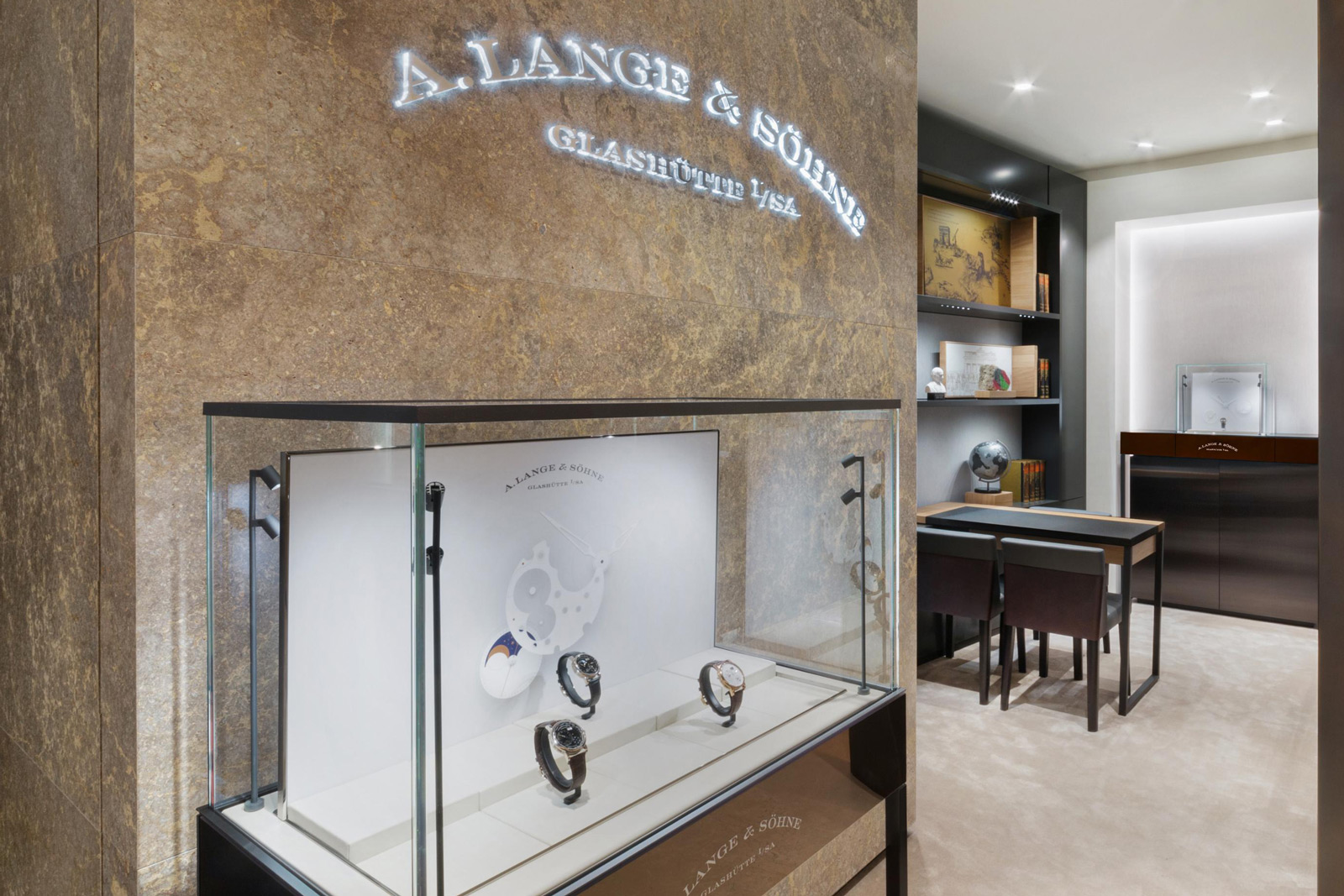
The recently opened Lange boutique inside Harrod’s in London
RPS: You have a very unique approach to e-commerce. How is that going to change and develop as we move forward out of the pandemic years?
WS: E-commerce was good, we developed it during covid, but it was a necessity. The people who bought from us online were the first people who were back in the boutique once they reopened. Isn’t that strange?
So we still believe the internet is a great place because today our customers are better educated and informed about what we do, than ever before. And that’s what we emphasise on our website, yes we have an e-commerce part, but the main factor is the information, photos, history, functions. That’s what’s really important to us. We believe if you spend this much money on a watch you want a human element, and as we have discovered even the youngest of our collectors want that.
RPS: Moving back to bricks and mortar, where in the world do you see the biggest growth opportunities for the brand moving forward?
WS: It really just depends on where the collectors are to be honest. It is hard to identify for us because we can have waiting lists on all watches, so wherever you allocate watches to, it will look like a strong market. So it’s very hard to say, but I’m a big fan of not putting all of our eggs in one basket. So our distribution strategy is about checks and balances. I don’t want to depend on one single market at any moment in time.
RPS: These types of decisions must be incredibly data-led, which I can imagine is tricky given the human nature of your retail network and sales strategy?
WS: As we are talking about the top end of the market, which is by its nature a lot more difficult than the mass market, but after collecting data for five years and using that to sharpen our tools it is important that today we are confident about where to go and what to do next.
In the past we needed about three to five years before a new boutique would reach maturity, now we’re down to about 18 months to a maximum of three years. These decisions are always data driven but they are only data driven to allow enough time for two human beings to sit down and have a proper discussion.
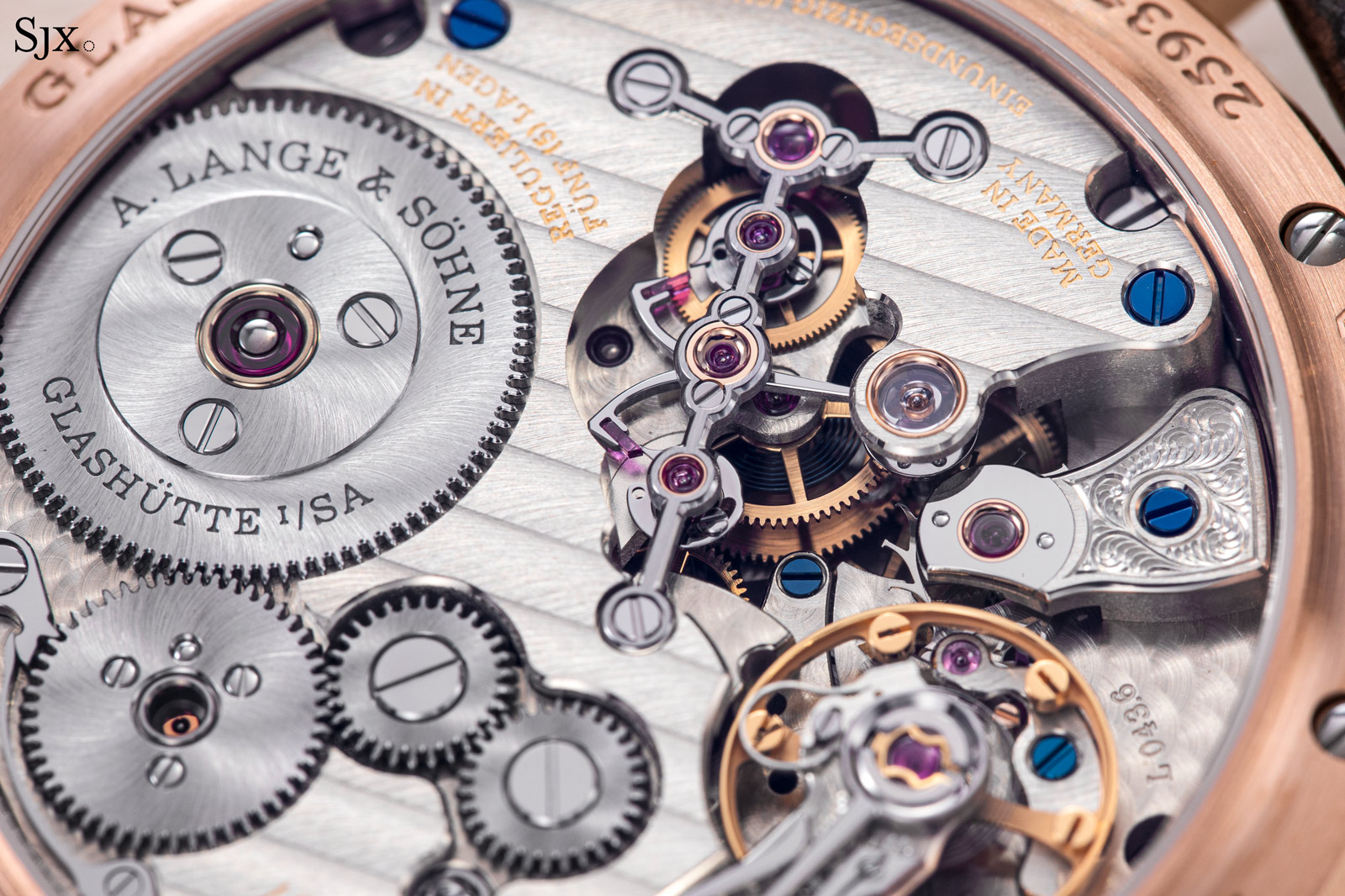
Lange is perhaps most famous for the quality of its mechanics
RPS: Where do you see the big challenges in your retail network appearing in the next five to ten years?
WS: There is a question of geographical balance, so how far can you stretch the distance between two points of sale, and how far is the customer prepared to move to get his watch. How can we smooth that and extend that distance by building a support system that makes it easy for someone to get a watch, or just get information on a watch, and that is something we are still working on which is a huge challenge. Especially as we want to decrease the number of points of sale.
RPS: But I assume you have to take into account that many, if not all, of your clients are ultra-high net worth individuals and so travel for them is not so much of a deal breaker. Is the only reason to decrease that distance so that your customers feel as though they can have a personal connection to your brand and your staff?
WS: That’s exactly the point. Again you look at our business model, everything is handcrafted, our people can work eight, maybe nine hours, but not permanently and it takes five years for us to fully train a watchmaker, so we really don’t have any economy of scale. So how do we maintain a level of closeness to our clients without having empty stores. We are working on new systems and schemes at the moment on how to bridge that gap and give them access without diluting our distribution network.
RPS: Switching tracks ever so slightly, from your position as a CEO within a large group like Richemont, what was your reaction to the Rolex purchase of Bucherer?
WS: Like everyone else, I think, I always thought Rolex was going to stay away from retail and now they have gone and bought one of the biggest on the planet.
As I’m not in the wholesale business anymore, I’m not terribly impacted by it and I have so many other things to worry about, I don’t have time to think about those things that don’t have an impact on me. You’re better off asking brands that do a lot of wholesale or retailers that carry a lot of Rolex, they will have more thoughts on it than I do. But overall for me it was just a feeling of surprise.
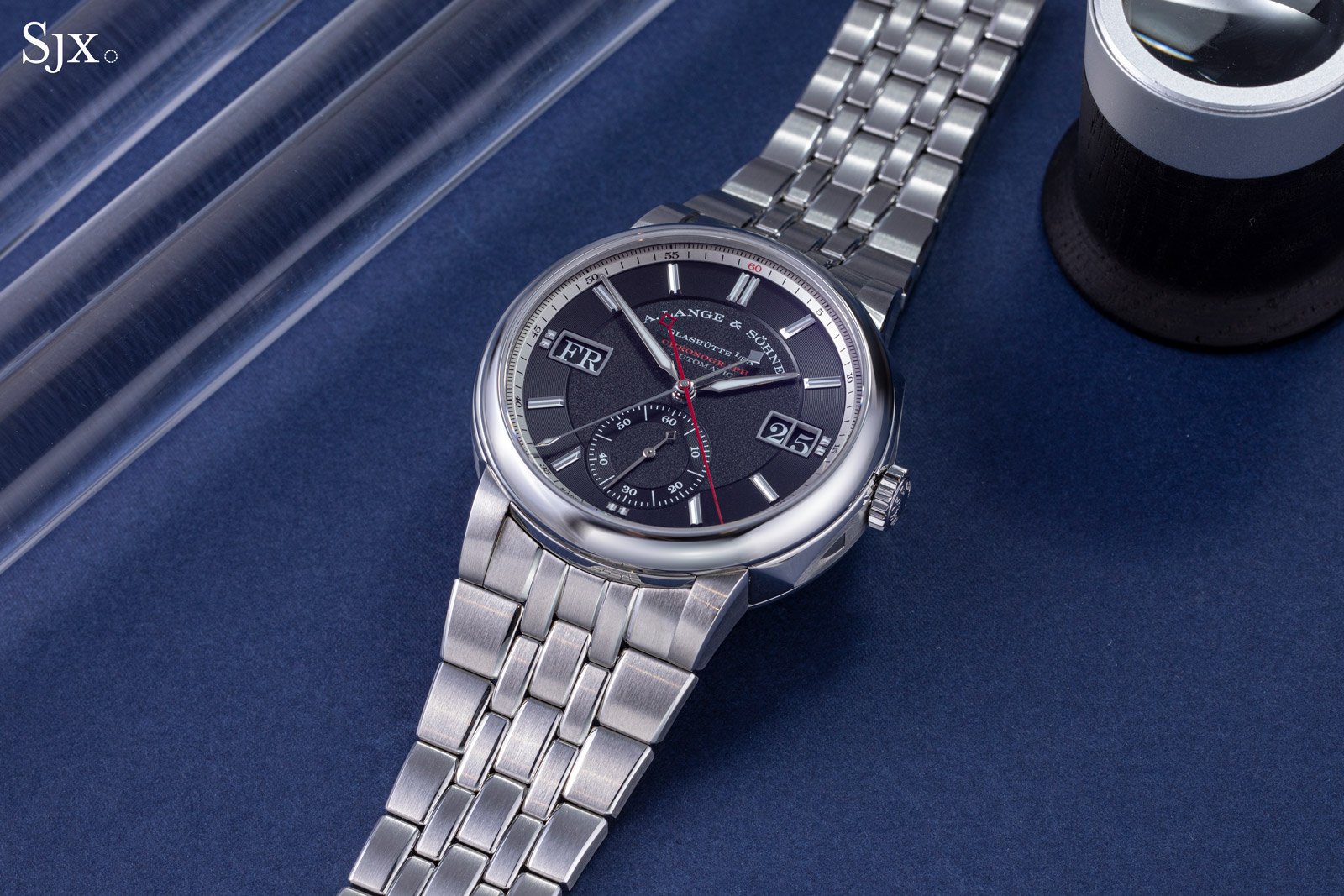
A tough one to obtain, new or pre-owned
RPS: Another big trend we have seen of late in the retail space is brands launching their own certified pre-owned programmes, yet there has been no news of A. Lange & Sohne considering this option. Is it something you have discussed internally?
WS: When you build watches and you say they will easily outlast the people that you sold them to in the first place; for example, I think maybe 95% of the pocket watches that we’ve ever produced are still in existence, there will undoubtedly be a secondary market. But we struggle so much in satisfying the supply of the primary market that I don’t worry too much about the secondary market. Specifically, when we look at the part of the market that is really concerned with selling above retail and all of that, I take it with a pinch of salt.
On one hand it’s good to know if you spend a lot of money on something, and if your wife asks, you can call it an investment. That’s what I always do if I buy something expensive.
On the other hand, it has also attracted a lot of people that are not passionate watch collectors. They just want to take you for a ride. They want to buy your watch and sell it tomorrow because there is a lot of money in it. There’s more money in that than we make, and we are the ones developing, producing and selling it.
If you then don’t have your market under control you will feed these people, and that’s not my job. So as much as I enjoy that people don’t lose money by buying our watches, I’m also aware of the struggle that comes with it. And I’m also not sure of the longevity of this flipping culture and doubling your money.
RPS: So you don’t see it as part of your responsibility as a brand to follow your clients’ journey, so they can buy it from you, and if they wish to part with it further down the line, you are there then too?
WS: No. Very clearly no, because we have our after-sales service. You buy a watch from us, you wear it, you enjoy it, you need it serviced, you can come to us and we will do that. Regardless of how old the watch is, we will do that for you. Not a question.
You buy a watch second hand and you’re not happy with it, you can send it to us, you get a like-new watch back. That’s our commitment.
But we are not the ones to get involved with those who want to sell their watch. That is someone else’s job. We support all of the auction houses, we make sure numbers are correct and no funny stuff is happening. But we don’t get involved with the sale. We have Watchfinder in the group, so if someone wants to trade in a watch we will refer them to Watchfider. But we do not get involved ourselves, and we don’t have plans to do so.
Back to top.


